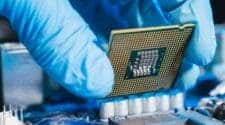Toyota Motor recently stated that “it is willing to use worn or defective parts from suppliers without affecting the performance and safety of the vehicle”. The reason for this move is, to solve the problems caused by the shortage of chips and the rising cost of raw materials. The company needs this to achieve the predetermined production speed. However, is it really possible to use “worn or defective parts” without affecting performance and safety? These chips are “defective or worn” because they do not meet certain standards. So why throw them back into the market?

Gizchina News of the week
However, Toyota officially explained that the so-called defective parts do not mean defective products. The company explains that these are just parts that are slightly worn or scratched. For instance, a square chip with a little dent that reduces the “squareness” of the chip. The chip still works perfectly but just does not have a perfect square shape. In the past, such “defective parts” were directly scrapped. The new policy also shows that Toyota’s requirements for parts have been reduced from “perfect” to “good enough”.
Toyota Motors is only reducing its “perfection”
Simply put, Toyota is reducing its level of perfection. Toyota guarantees that for the future use of these worn or defective parts, the biggest prerequisite is that the safety and performance of the car remain top-notch. Furthermore, car buyers will most likely not notice these defects. The sections of the car that will use these parts will not be visible at first glance. Thus, except you are specifically searching for the defects, you will probably not notice any blemishes.
For this decision, Takefumi Shiga, the chief person in charge of Toyota’s R&D project, said bluntly: “This requires a lot of courage”. Toyota hopes to use this measure to alleviate the problem of rising costs caused by shortages of chips and raw materials.
Over the past year, there has been a severe shortage of chips globally. According to a recent survey, the global chip shortage is “far from over”. Unfortunately, the delays in chip production are causing loss of sales and many companies are facing challenges. According to an American investment company, Susquehanna Financial Group, the average delivery time for summer chip orders is now 19 weeks. As of October, the lack of core further deteriorated, and the average delivery time has increased to 22 weeks. For more scarce chips such as power management components and microcontrollers for automobiles, the delivery time will be longer.





